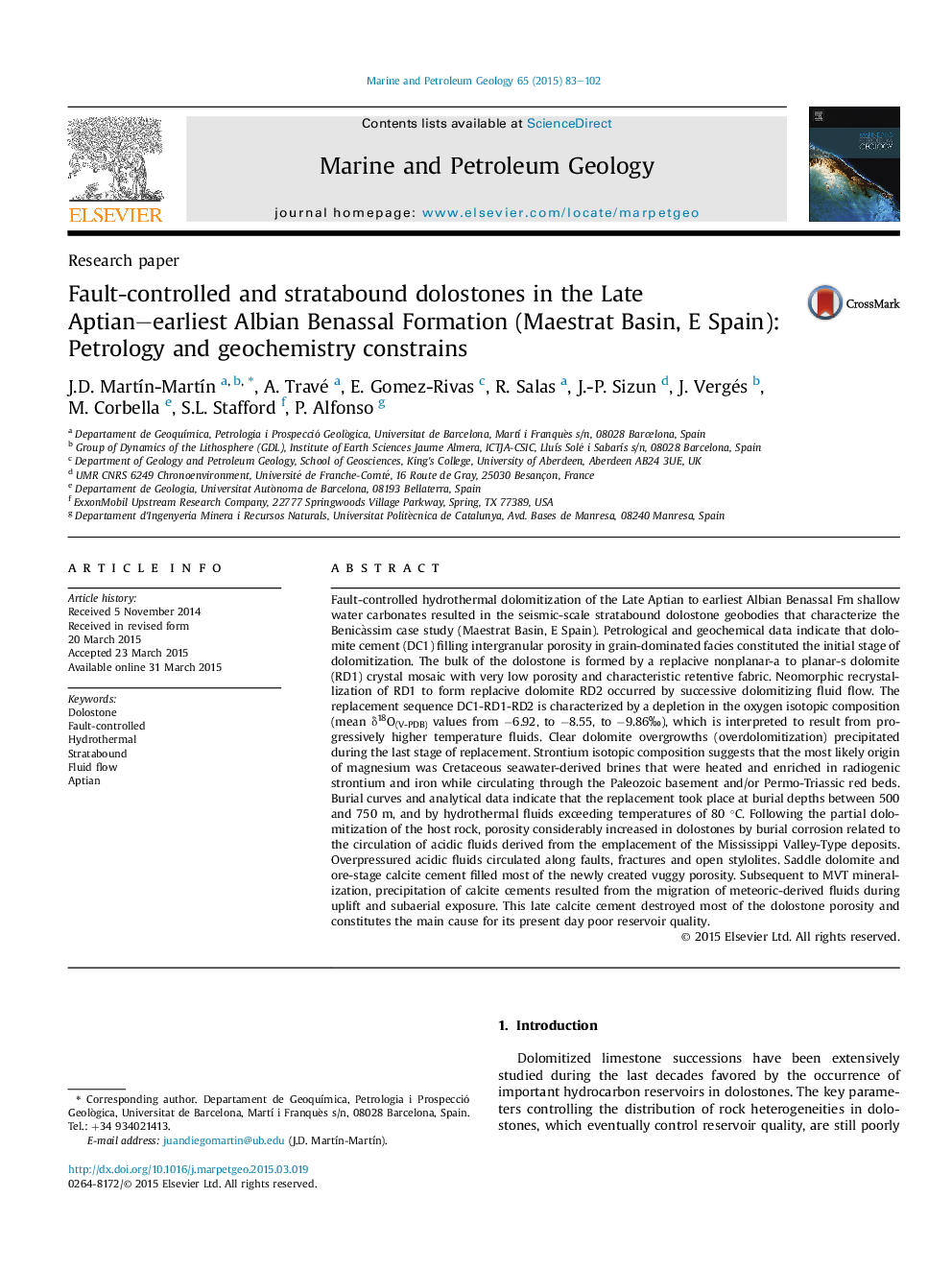| کد مقاله | کد نشریه | سال انتشار | مقاله انگلیسی | نسخه تمام متن |
|---|---|---|---|---|
| 6435044 | 1637160 | 2015 | 20 صفحه PDF | دانلود رایگان |
- We study seismic-scale fault-controlled and stratabound dolostones.
- Depositional, diagenetic and structural controls on formation are discussed.
- Mud-dominated and stylolitized beds represent barriers to dolomitizing fluids.
- Successive dolomitizing fluids considerably increased RQ of the dolostone.
- Meteoric calcite cementation during uplift destroyed most RQ.
Fault-controlled hydrothermal dolomitization of the Late Aptian to earliest Albian Benassal Fm shallow water carbonates resulted in the seismic-scale stratabound dolostone geobodies that characterize the Benicà ssim case study (Maestrat Basin, E Spain). Petrological and geochemical data indicate that dolomite cement (DC1) filling intergranular porosity in grain-dominated facies constituted the initial stage of dolomitization. The bulk of the dolostone is formed by a replacive nonplanar-a to planar-s dolomite (RD1) crystal mosaic with very low porosity and characteristic retentive fabric. Neomorphic recrystallization of RD1 to form replacive dolomite RD2 occurred by successive dolomitizing fluid flow. The replacement sequence DC1-RD1-RD2 is characterized by a depletion in the oxygen isotopic composition (mean δ18O(V-PDB) values from â6.92, to â8.55, to â9.86â°), which is interpreted to result from progressively higher temperature fluids. Clear dolomite overgrowths (overdolomitization) precipitated during the last stage of replacement. Strontium isotopic composition suggests that the most likely origin of magnesium was Cretaceous seawater-derived brines that were heated and enriched in radiogenic strontium and iron while circulating through the Paleozoic basement and/or Permo-Triassic red beds. Burial curves and analytical data indicate that the replacement took place at burial depths between 500 and 750 m, and by hydrothermal fluids exceeding temperatures of 80 °C. Following the partial dolomitization of the host rock, porosity considerably increased in dolostones by burial corrosion related to the circulation of acidic fluids derived from the emplacement of the Mississippi Valley-Type deposits. Overpressured acidic fluids circulated along faults, fractures and open stylolites. Saddle dolomite and ore-stage calcite cement filled most of the newly created vuggy porosity. Subsequent to MVT mineralization, precipitation of calcite cements resulted from the migration of meteoric-derived fluids during uplift and subaerial exposure. This late calcite cement destroyed most of the dolostone porosity and constitutes the main cause for its present day poor reservoir quality.
Journal: Marine and Petroleum Geology - Volume 65, August 2015, Pages 83-102
